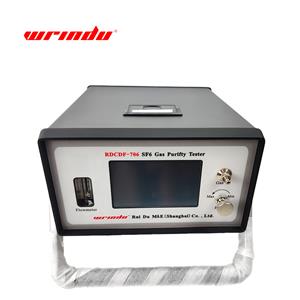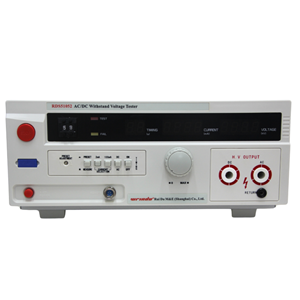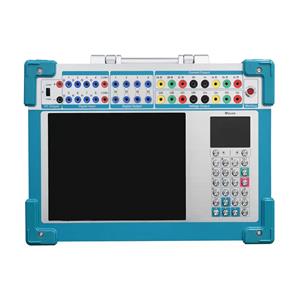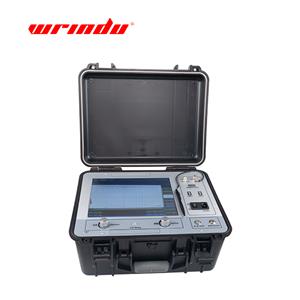Generator rotor structure
1. Rotating shaft (rotor body)
The generator shaft is forged from alloy steel with high mechanical properties and good magnetic permeability. The rotating shaft has a central hole for checking the quality of silverware and for installing the axial conductive rod of the excitation lead.
Many transverse grooves are evenly distributed along the axial direction in the center of the large teeth of the rotating shaft body. The stiffness of the two orthogonal axes on the rotating shaft is evenly distributed to reduce frequency-multiple vibrations.
2.Rotor winding
The rotor winding slots are parallel slots with openings and ventilation slots axially and inclined at both ends at the bottom of the slots. In order to introduce cold hydrogen into the straight section of the winding from the ventilation slots at both ends of the rotor body, and to make the air volume in each radial ventilation branch along the axial direction in the section evenly distributed.
Each turn of the rotor coil is composed of two upper and lower silver-containing copper wires. The entire length is a copper bar processed into a rectangular slot. When the two wires are put together oppositely, a rectangular ventilation duct is formed in the middle; between the straight line of the coil and There is an air inlet hole on the side near the connection point of the end corners, and there is an air outlet hole on the side of the copper bar near the center of the magnetic pole. The insulation of the rotor coil is Class F. The bottom surface of the pad under the wedge in the rotor coil slot and the inner surface of the guard ring insulation at the end of the coil have a PTFE sliding layer to facilitate the free expansion and contraction of the copper wire. Under the aluminum slot wedge, a silver-plated damping copper bar is embedded, so that the motor has good ability to withstand negative sequence current.
3. Ring guard
The end of the rotor coil is supported by a 18Mn18Cr high-strength anti-magnetic steel retaining ring that is insensitive to stress corrosion. The rotor retaining rings of 300MW turbine generators all adopt a suspended embedded structure, that is, the retaining ring is only embedded on the rotor body.
4.Ventilation and cooling
The generator adopts a water-hydrogen cooling method of water internal cooling of the stator coil, hydrogen internal cooling of the rotor coil, and hydrogen cooling of the stator core and structural parts. The rotor coil is cooled by segmented air gaps and oblique flow ventilation. The conductors in the slots are made of flat copper wires. There are two rows of ventilation holes in the straight section of the copper wires that are staggered and inclined in opposite directions. The stator core is radially ventilated.
Hydrogen relies on single-stage propeller fans installed at both ends of the rotating shaft to perform a sealed cycle in the generator. After taking away the losses of the generator, the hot hydrogen is cooled by hydrogen coolers installed at both ends of the generator, and then enters the cycle again.
The fan is an air supply type and sends the cold hydrogen cooled by the cooler to each air inlet area. The stator core and rotor winding adopt a ventilation structure corresponding to "five in and six out", that is, it is divided into five air inlet areas and six air outlet areas along the axial length of the generator, and the inlet and outlet air areas are arranged alternately. There are four coolers in the machine base, which are arranged on both sides of the excitation end and steam end.
In order to prevent the short circuit of the air path in generators using this kind of ventilation cooling, an air gap spacer ring is installed on the stator core (or on the stator and rotor) in the hot and cold air zone in the air gap between the stator and rotor to prevent the rotor from being thrown away. The hot air is sucked into the rotor for recirculation.
5.Hydrogen cooler
The hydrogen gas is cooled by passing through the cooler. In the cooler, the hydrogen transfers heat to the cooling water in the finned tubes in the cooler. The fin tube is made of Blo nickel copper tube with thin copper fins wrapped around it and spray-enameled with soldering tin. Fin tubes have better heat transfer performance and lower air flow resistance for hydrogen. The finned tubes are fixed on the tube plates of the front and rear water chambers using the tube expansion process. The cooler must withstand a 1.4 MPa water pressure test before leaving the factory.
The bottom front water chamber end of the cooler is rigidly fixed to the bottom of the generator frame with bolts. The water inlet and outlet pipes are connected to the water inlet and outlet pipes at the lower part of the front water chamber. The rear water chamber at the top of the cooler is supported on the top of the base with stainless steel gaskets. This gasket allows the cooler to expand and contract freely with temperature changes. The top of the rear water chamber is covered with partitions and airtight steel plates. There is a release valve in this space. To ensure safety, the air release valve must be opened to release the pressure inside the cover before removing the cover.
The fin tubes in the cooler can be cleaned only after removing the top cover and water chamber cover.
In addition, there is no bypass valve between the generator base and the airtight cover and partition on the top of the cooler, which is used to balance the hydrogen pressure on both sides of the stainless steel gasket during normal operation. There is a special precautions label on this airtight cover, and instructions for safe operation are engraved on the nameplate.
The hydrogen cooler is designed so that the generator can still operate safely when 1/8 or 1/4 of them are withdrawn. By adjusting the valve of the hydrogen cooler outlet pipe to control the flow of cooling water, the cold hydrogen temperature can be adjusted at different loads. The external water system of the cooler includes the cooler's inlet and outlet water thermometers and inlet and outlet water pressure gauges, as well as the water inlet valve, water outlet throttle valve, discharge valve on the water inlet pipe and the fine-tuning valve on the water outlet pipe.
6.Sealing device
The generator of a certain factory adopts a single-flow ring oil seal structure, which prevents hydrogen from escaping through the oil flow between the journal and the sealing shoe. The shaft seal system is annular. The sealing tile of each shaft seal device contains two rings with four sections each. The inner diameter of the ring is several hundred millimeters larger than the diameter of the rotating shaft. Each section is radially fixed by a self-tightening spring. The function of the self-tightening spring is to axially separate the two rows of rings. After the pressure oil enters between the two rings, it is divided into two paths, one flowing to the air side outside the machine and the other flowing to the hydrogen side.
An oil film is generated in the gap between the rotating shaft and the sealing tile to prevent the hydrogen inside the machine from leaking along the shaft and prevent the outside air from entering the machine along the shaft and affecting the purity of the hydrogen. The hydrogen side oil return expansion tank is divided into two compartments in the middle, and the two compartments are connected through a section of U-shaped pipe at the bottom. The purpose is to prevent oil and gas from circulating in the motor between the expansion box and the two ends of the generator. The main function of the float valve is to ensure that when the oil is output through the expansion box, hydrogen is not allowed to enter the bearing oil drain port through the air precipitation box, especially in the expansion box. When the oil level is too low.
7. Fan and fan guide blade seat
Since the stator winding losses are taken away by the cooling water, the wind pressure and air volume can be significantly smaller than those of full hydrogen cooling. Therefore, the rotor fan can be designed as a single-stage axial flow fan, which is installed on the steam and excitation end handles outside the rotor guard ring. Each fan is composed of 47 forged aluminum moving blades. The moving blades are positioned and fastened by the fan seat ring, pressure ring and elastic ring under the blade.
All moving blades are tested at 1.2 times the rated speed before leaving the factory to ensure safety. Since the outer diameter of the moving blades on the fan seat ring is smaller than the inner diameter of the stator core, the moving blades are ground, pre-assembled and numbered in the manufacturing plant before being assembled on the rotor for overspeed testing and shipped together with the rotor. No more disassembly during generator installation. In order to improve fan efficiency and form a designed air path.
First-level guide stator blade seats are installed at both ends of the steam and excitation (or steam and collection) outside the moving blade.
The guide vane seat is made of cast aluminum and is equally divided into four arc segments along the circumference. It is easy to install on the end caps at both ends after the rotor penetrates into the stator inner bore and is in place, and after the sealing support and sealing tiles are installed. on top of the adjustment pad. The cooler windshield divides the front and rear of the fan into low-pressure and high-pressure air zones, and the latter forms the air inlet zone of the hydrogen cooler.
8.Neutral point transformer
When a single-phase ground fault occurs in the generator stator winding, the current flowing through the ground point is the ground capacitance current of the generator and its connected factory branches, closed busbars and main transformer low-voltage windings. When the grounding capacitor current exceeds the allowable value, it will burn the stator core, which may damage the stator winding insulation and lead to short circuits between turns or phases. Generator neutral point grounding methods generally include ungrounded neutral point, grounded neutral point through arc suppression coil, and neutral point grounded through resistor.




